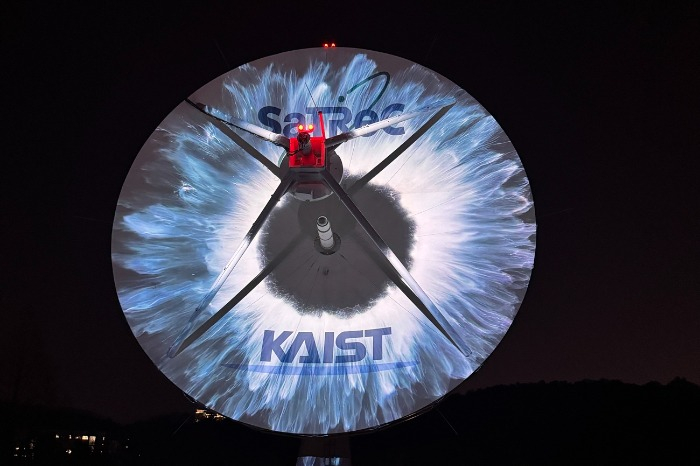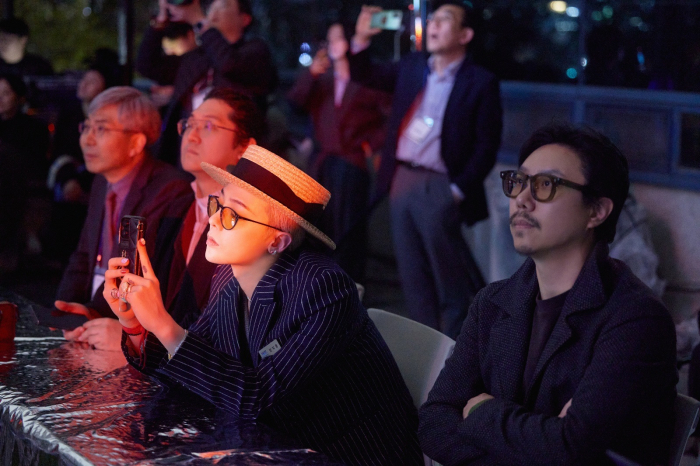K-pop
KAIST launches Korean rapper G-Dragon’s music into space
His song and iris imagery were uploaded to KAIST’s small satellite and transmitted into space
Apr 10, 2025 (Gmt+09:00)
1
Min read
Most Read
LG Chem to sell water filter business to Glenwood PE for $692 million


KT&G eyes overseas M&A after rejecting activist fund's offer


Kyobo Life poised to buy Japan’s SBI Group-owned savings bank


StockX in merger talks with Naver’s online reseller Kream


Meritz backs half of ex-manager’s $210 mn hedge fund



The Korea Advanced Institute of Science & Technology (KAIST) has launched the music and iris image of G-Dragon, a Korean rapper and singer-songwriter, into outer space via satellite, marking the world's first transmission of music based on media art into space, according to the country's top science institute.
Lee Jinjoon, a new media artist and professor of KAIST’s Graduate School of Culture Technology, on Wednesday successfully transmitted the artist’s music and biometric imagery to the space satellite as part of a collaborative media art initiative, said KAIST’s Satellite Technology Research Center.
The project, titled "Emotive signal expanding the human inner universe into the external cosmos,” brings together KAIST’s advanced space technology, Professor Lee’s generative AI-driven media artwork and G-Dragon’s voice and music.
Lee heads the Art and Technology Center at KAIST. G-Dragon also serves as an adjunct professor at KAIST’s Department of Mechanical Engineering.

The rapper’s track "Home Sweet Home" was transmitted into space via the antenna of South Korea’s second-generation small satellite, launched aboard the Nuri rocket in May 2023. The satellite was developed by KAIST.
“The iris is often referred to as the mirror of the soul,” said Lee. "Through this work, we wanted to express the infinite universe viewed through the inner world of humanity by following G-Dragon’s gaze."
Yeonhee Kim edited this article.
More to Read
-
 K-popK-pop exports boom as end of Chinese K-wave ban looms large
K-popK-pop exports boom as end of Chinese K-wave ban looms largeMar 31, 2025 (Gmt+09:00)
4 Min read -
 Aerospace & DefenseSpaceX's Falcon 9 launches S.Korean satellite into orbit
Aerospace & DefenseSpaceX's Falcon 9 launches S.Korean satellite into orbitNov 12, 2024 (Gmt+09:00)
2 Min read -
 Aerospace & DefenseKAIST discloses Earth images from Next-Gen Small Sat 2
Aerospace & DefenseKAIST discloses Earth images from Next-Gen Small Sat 2Sep 05, 2023 (Gmt+09:00)
1 Min read -
 Aerospace & DefenseKorea closer to independent satellite technology
Aerospace & DefenseKorea closer to independent satellite technologyNov 22, 2021 (Gmt+09:00)
4 Min read
Comment 0
LOG IN


